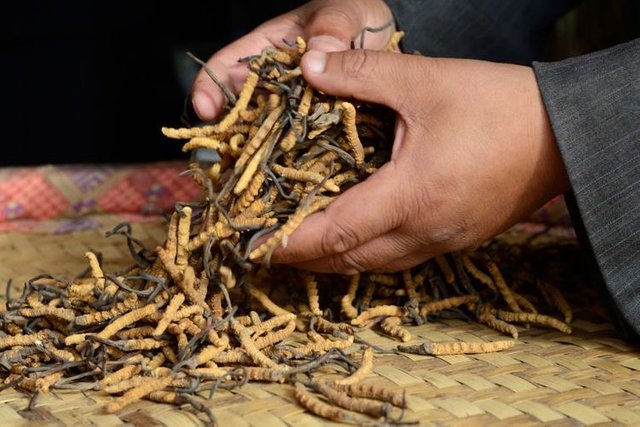



Yarsagumba (Cordyceps sinensis / Ophiocordyceps sinensis) belonging to Ophiocordycipitaceae family is a fungus that parasitizes larvae of ghost moths and produces a fruiting body valued as an herbal remedy. Yarsagumba has been recognized in Nepal for last thousands of years. It is one of the highly potential medicinal mushrooms in the world. Owing to the herb's high efficacy and potency in curing various diseases, it is well known as an important nourishing tonic. In the present review an attempt has been made to gather the information regarding Yarsagumba, its history, cultivation, taxonomical characters, and various medicinal uses, phytochemical and pharmacological studies conducted so far. Different pharmacological actions such as antiasthmatic, antineoplastic, antibacterial as well as actions on the heart and blood vessels, and on the smooth muscles of intestine and uterus have been reported. With this review we conclude that there is a need for further studies for isolation of individual constituents and screening of various activities on this miracle mushroom.
Yarsagumba’s health benefits are believed to have been known from some 1500 years ago, and in ancient times, it was said to be taken as a potent tonic by kings and noblemen. Since Yarsagumba is a natural product, the chances of any side effects are minimal.
Yarsagumba is useful to increase memory and immune system.
Yarsagumba is used to treat respiratory disorders such as tuberculosis, asthma, chronic bronchitis.
It improves liver functioning and cures hepatitis B.
Heart problems including cardiovascular disease and hypertension can be prevented.
The fermentable strain of the mycelia causes normal fat mobilization and beta-oxidation, thereby maintaining blood glucose level during prolonged exercise in athletes